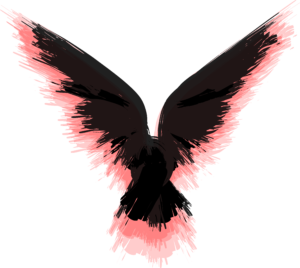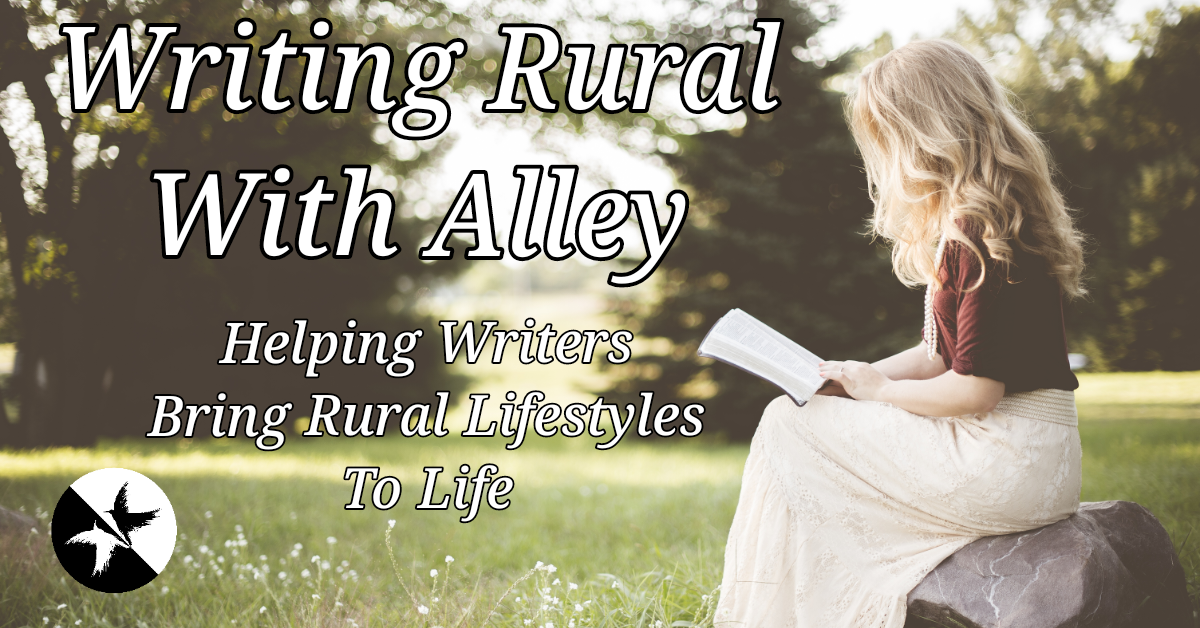Do you know the first pumpkin pies were made inside the pumpkin shell? What kind of animals eat pumpkins? What parts of the plant are edible? What do tapeworms have to do with pumpkins? Are there really Candy Cane and Moonshine pumpkins? Find out on this episode!
Welcome to Writing Rural with Alley, the fiction writer’s inspiration station for rural life and lifestyles, from historical to post-apocalyptic, helping you bring your rural stories to life! I’m Alley, and this is episode (#) (title). Stick around to the end to find out all the ways things could possibly go wrong. Now, let’s get into this.
It’s that time of year again when, here in America, the pumpkin spices come out in almost everything! What’s up with that? Now, I like pumpkin pie as much as the next person, but this has gotten ridiculous when coffee shops try to sell pumpkin-flavored dog treats. But since the world is going crazy for pumpkins, let’s talk about what the coffee shop doesn’t tell you about pumpkins.
Before we start, let me give a brief disclaimer that I am in no way, shape, form, or fashion a doctor or a medical person of any kind. This information is solely for the purposes of fiction storytelling and nothing else! Okay, let’s get into this.
Pumpkins are believed to have originated in Central America. The first documented pumpkin seeds came from the Oaxaca Highlands of Mexico. This is from the pre-Columbian era. This type of pumpkin was small and had a bitter taste to it. The tribes originally grew them not for their seeds or inners but for their outer shell. Also known as the husk. The shell of a pumpkin is ideal for winter food storage and storage for times of low food or food scarcity. The pumpkin soon spread and is commonly known as part of the Three Sisters to the Native Americans.
Today, we have over 45 different varieties of pumpkin. They come in many colors: green, orange, yellow, red, and even white. Pumpkins are technically a fruit and are 92% water. All parts of the pumpkin, from the roots and stem to the leaves and fruit (AKA the pumpkin), are edible. According to the University of California, they are naturally low in energy density. Pumpkins are an excellent source of potassium, vitamin A, and beta-carotene, the powerful antioxidant that gives orange vegetables and fruits their color.
There are also many pumpkins that have some weird and goofy names that you know I have to share. They include but are not limited to Hooligan, Baby Boo, Casper, Cinderella, Long Island Cheese, Tarzan, Warty Goblin, Batwing, Moonshine, Neck (No, seriously, just the body part neck for a name), One Too Many, Ol Zeb’s, Cotton Candy, Rumbo, Sunlight, Tom Fox, Wee-Be-Litle, Wolf, and Orange Smoothie.
There are many food uses for pumpkins. As I said, they have been used for winter storage. Many Native Americans used them to store other food inside. Some cut the shells into strips and cooked them over an open fire. They also ate the seeds, but remember that the first seeds and the healthiest pumpkin seeds were always saved for the next year’s crops. The first seeds were in case anything happened to the rest of the crop.
They have been used over the years for many things. Soups, stocks, purees, dried and ground to make spices, cocktails, pumpkin butter, and sometimes used as a pectin ingredient. However, the most well-known use is as pumpkin pie. This was first invented by the Native Americans. They would cut the top off the pumpkin and place milk, honey, and spices inside before baking it in hot ash. I suddenly want to try that. It sounds good. Is anyone else hungry now? Just me?
The pumpkin has had other uses that are not all about eating them. They have been used as natural planters, temporary water containers, food storage containers, and serving bowls; some Native Americans wove the skins into mats and used them as decorations, plus fed them to animals. This can include domesticated dogs (or pets if you want the modern term.) They can be fed to livestock, including but not limited to horses, cows, rabbits, sheep, goats, chickens, turkeys, and pigs. Just remember too much at one time causes diarrhea in animals. It has historically been used as a hunting lure for deer, bears, foxes, wolves, coyotes, wild boars, squirrels, possums, raccoons, and even mice. Basically, anything that isn’t a carnivore.
Pumpkin has also been used for medicinal purposes. Native Americans used the seeds for expelling tapeworms and as a diuretic. They also used the flower as a way to topically soothe minor injuries. It has been used for infection healing and kidney stone prevention for urinary tract issues. It has been believed to help some with depression, though modern medicine would say it does not. I don’t know what is true and not true outside of it can cause diarrhea if too much is eaten at a time.
Historically, and even today, many midwives recommend pumpkin to pregnant women as a food they should eat. They are high in many vitamins and minerals and are an all-around healthy food. They also are helpful to the pancreas and the way it makes insulin. According to Herbalgram, it is theorized that the protein-bound polysaccharides (PBPP) in pumpkin may have a role in preventing the development and progression of diabetes.
Currently, research and testing are being done to find out all of the potential benefits of pumpkins. One is to see if pumpkin really does prevent the development and progression of diabetes. There are studies of the effects of men’s testicular cancer prevention and to see if it helps with male night time over-active bladder issues.
Other studies are to see if it may help protect against harmful organisms resulting in infectious diseases, the effect on the cardiovascular system, if it can lower cholesterol, improve moods, or if it really can get rid of intestinal parasites.
Fun fact: In 2016, the largest pumpkin ever grown weighed in at a whopping 2,624 pounds or 1,190 kg. It was grown in Belgium.
What could possibly go wrong?
Likely to go wrong: Your character eats too much pumpkin in one sitting and gets diarrhea. This would be very embarrassing on a first date.
Likely to go wrong: Your character is making a pumpkin pie for the first time, and they burn it.
Possible to go wrong: Your character uses the pumpkin shell as food storage for the winter, and they do not properly prepare it, causing the pumpkin and everything in it to mold.
Possible to go wrong: Your character feeds too much pumpkin to their dog, and the dog gets diarrhea. If the dog is locked in the house alone, when the owner is at the store or even work, there could be poop everywhere when the owner returns home.
Unlikely to go wrong: Your character becomes distracted while cooking the pumpkin, and it cooks so long it catches on fire.
Unlikely to go wrong: Your character feeds a pumpkin to their livestock. The livestock are so excited about the pumpkin that your character is trampled as the livestock try to get to the pumpkin before the other animals do.
Improbable, but still technically in the realm of possibilities: Your character uses a pumpkin as bear bait when hunting. During the up, a bear comes across your character, and they are mauled by the bear.
Improbable, but still technically in the realm of possibilities: Your character fills a pumpkin shell with milk, honey, and spices before placing it on an open fire. They cook the pumpkin so long that when they go to pick it up off the fire, it breaks open, pouring the inside all over their hands and burning them.
Helpful links to learn more:
https://www.pbs.org/food/the-history-kitchen/history-pumpkins-recipes/
https://winghamwildlifepark.co.uk/pumpkins-and-keeping-wildlife-safe-on-bonfire-night/ https://earth911.com/home-garden/10-uses-for-your-pumpkin/
https://www.history.com/news/pumpkin-facts-halloween-jack-o-lantern https://www.universityofcalifornia.edu/news/10-things-you-probably-didnt-know-about-pumpkins
https://www.herbazest.com/herbs/pumpkin/pumpkin-origin-history
https://wa.kaiserpermanente.org/kbase/topic.jhtml?docId=hn-2151005


